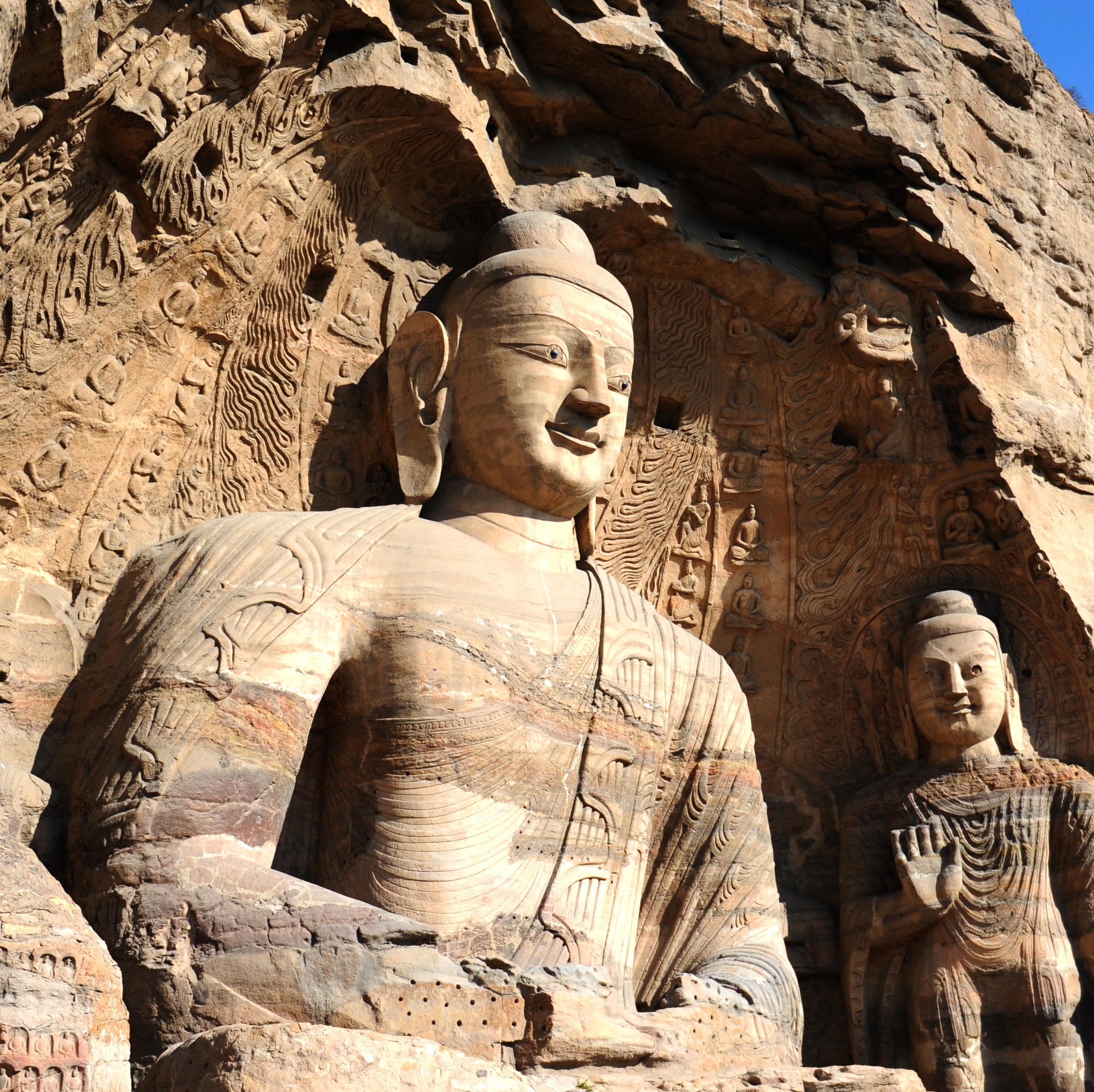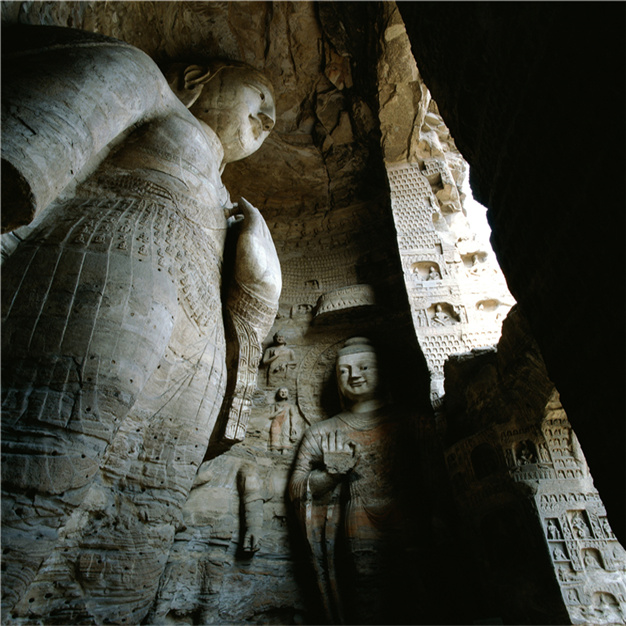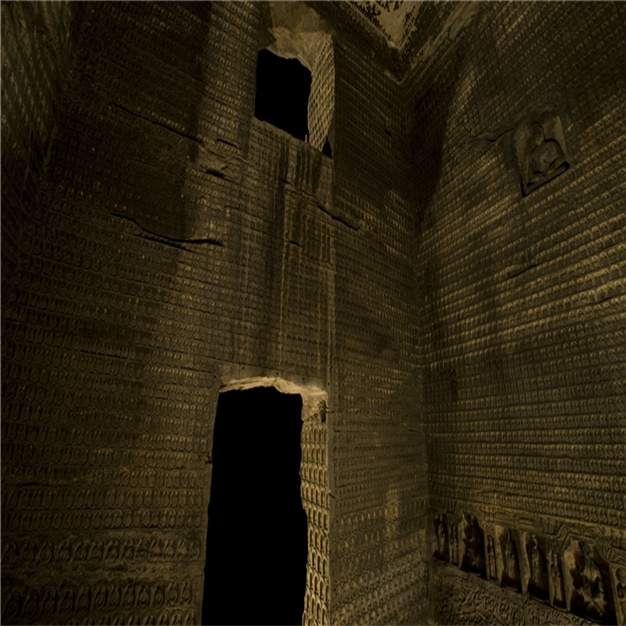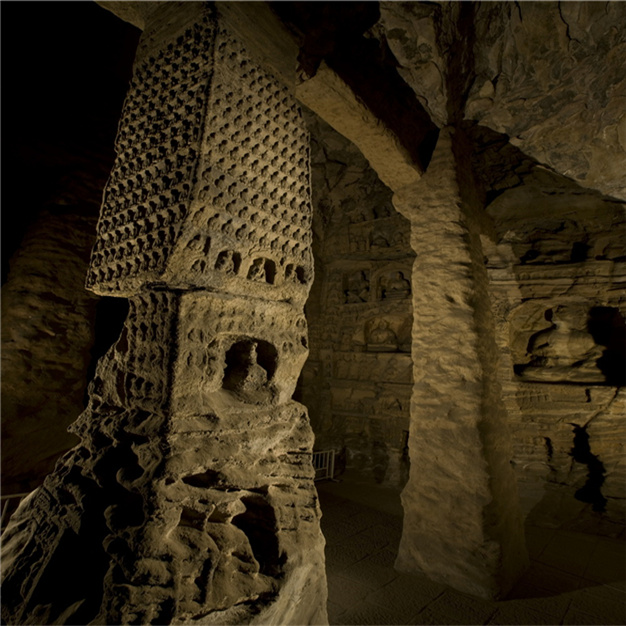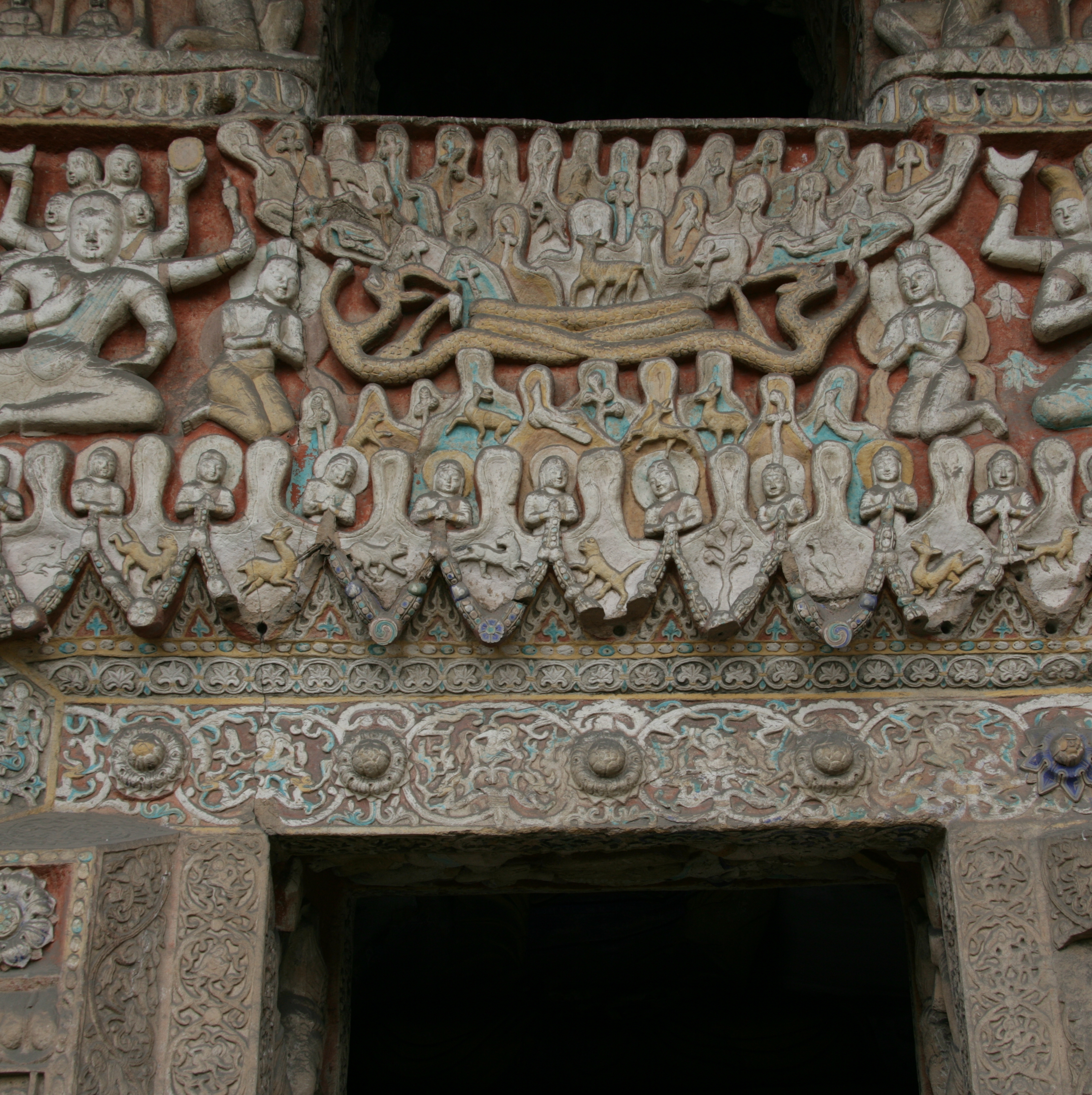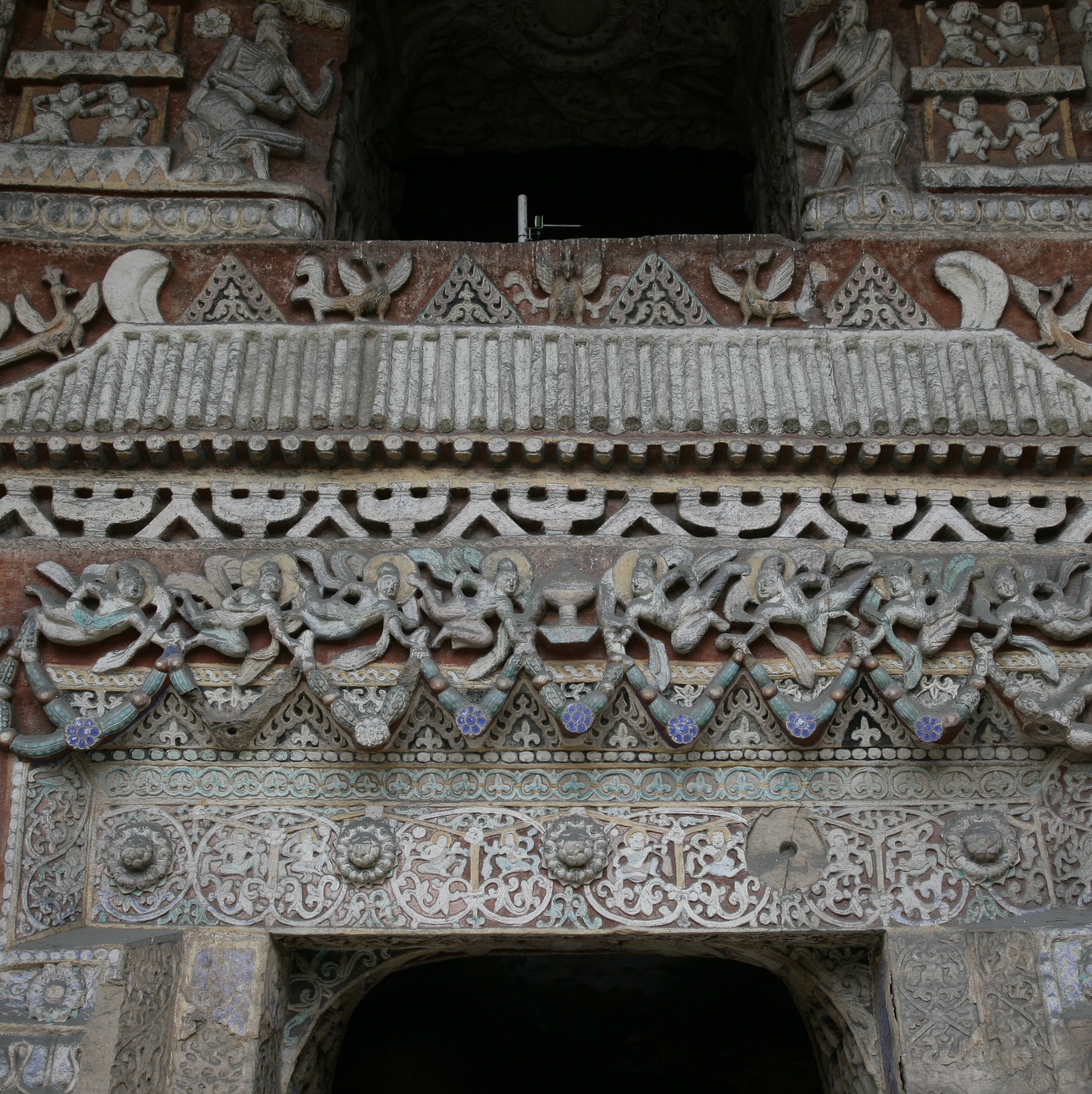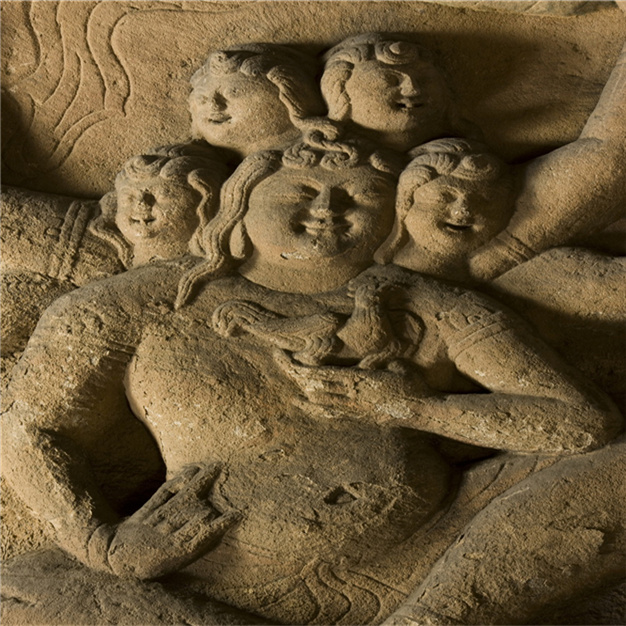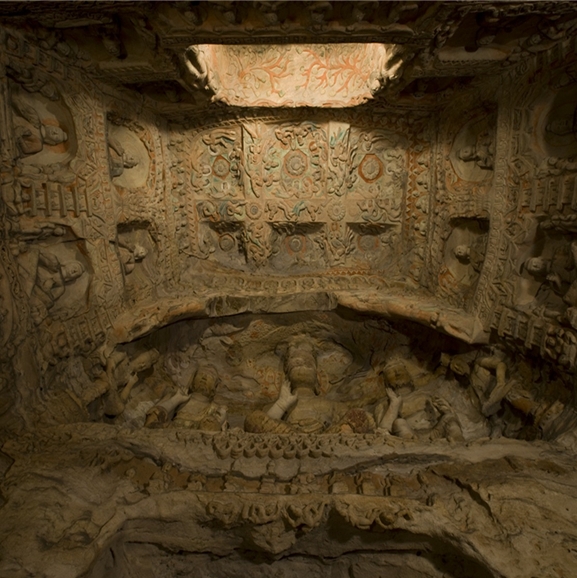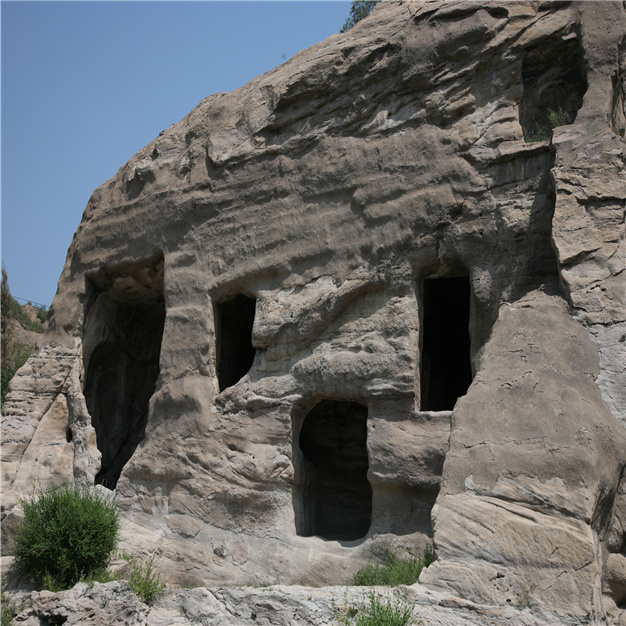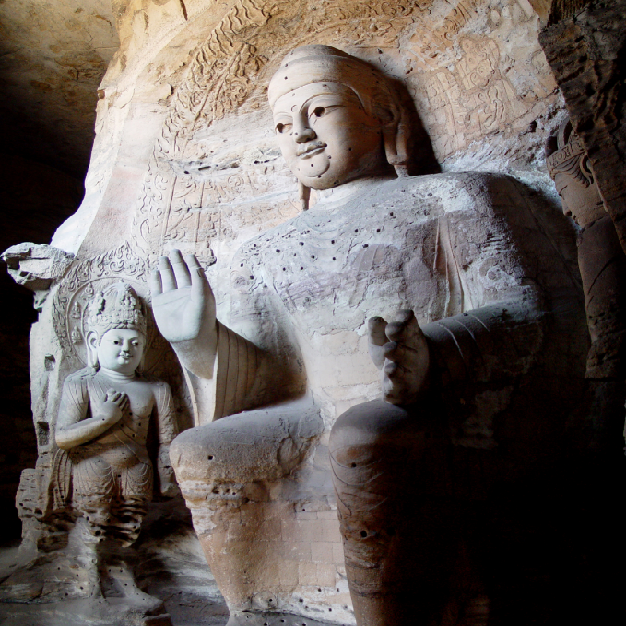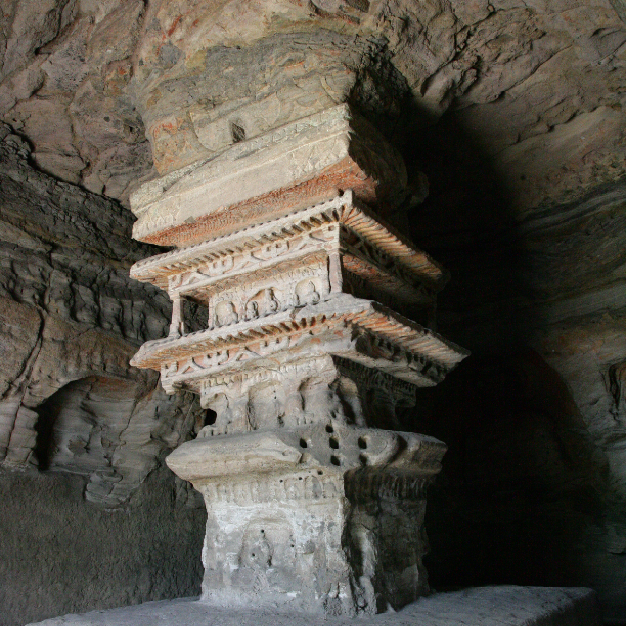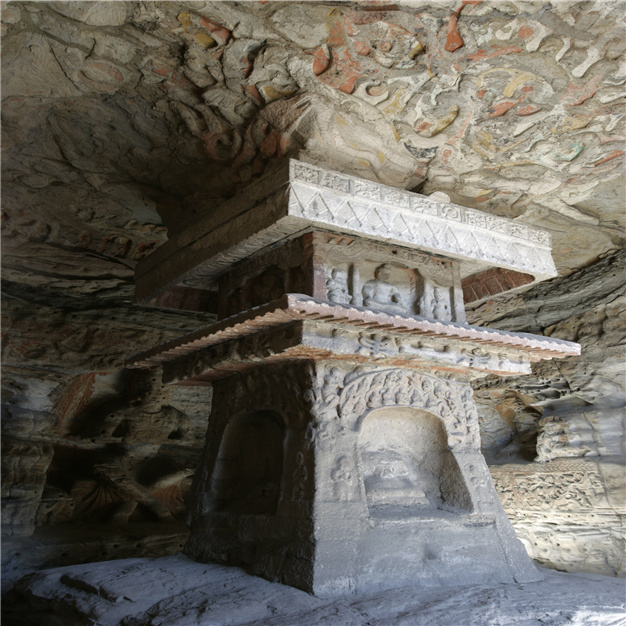Encyclopedia
Endless three-dimensional picture scrolls shuttling through thousands of years
Introduction of Yungang Grottoes
Yungang Grottos is one of the three major grotto sites in China. It is located on the southern part of Wuzhou Mountain at the northern bank of Ten-miles River, about sixteen kilometers west of Datong City, Shanxi Province. The grottos extend about one kilometer from east to the west, and were all carved out of the mountain. The 254 extant grottoes consist of 45 major grottoes and more than 51,000 sculptures. Representing the highest level of world carved art in the fifth century, the Yungang Grottos is considered to be exemplary Chinese Buddhist art work at its finest. The site was listed on the first batch of Chinese key cultural relic preservation units in March, 1961 by the State Council. In December, 2001, Yungang Grottos was listed as a UNESCO World Heritage Site and became one of the nation’s earliest 5A tourist areas in May, 2007.
HISTORICAL DEVELOPMENT OF
YUNGANG GROTTOES
YUNGANG GROTTOES
This is a roll of static film, which is the epitome of history and the evidence of history
In ancient times under the jurisdiction of Yanmen Prefecture, Datong was named Ping Cheng.
Ping Cheng nestled between the outer and inner Great Walls and Fort Wuzhou (presently the old city of Zuoyun). It had a strategic importance as the northern gateway to Central China since it guarded access between the Han Chinese and ethnic minority groups such as the Huns and Xianbei. Ping Cheng was also an international metropolis at the east end of the Silk Road and the base for Tuobao tribe of Xianbei group after their capital was moved to the area in 398 A.D.
It took the emperors Daowu, Mingyuan and Taiwu of Northern Wei Dynasty 66 years to control and unify the Northern part of China. Ping Cheng served as the Capital city of Northern Wei Dynasty and was the political, economic and cultural center for 96 years from 398 A.D. Great progress was made in the country when Ping Cheng served as its Capital. Yungang Grottoes were part of that progress. It was a huge project initiated and supported by the Northern Wei Dynasty to disseminate Buddhism and spread its popularity. In 494 A.D. the Capital was moved to Luoyang by emperor Xiaowen.
The six decades from 460 A.D. to 524 A.D. witnessed the completion of statues at major caves in Yungang Grottes. In 460 A.D., after the advice of the eminent monk Tan Yao, emperor Wencheng gave instructions to excavate five caves in Wuzhou Mountain and build Buddhist statues there. The five caves by Tanyao are numbered 16 to 20.
cave 20
460-470 A.D.
The statues are no longer roofed over due to the collapse of its front wall and the ceiling in early years, and the wooden structure constructed in Liao dynasty in front of this cave was also destroyed during war. The main Buddha is 13.7 meters high, has high Usnisa (protuberance) on the head, broad forehead, round face, long eyes, high-bridged nose and moustache, with his hands in the mudra of meditation. The Buddha wears a Kasaya with ridged pleats, leaving the right shoulder bare, which shows Gandaran influence. With strong physique and dignified expression, this statue highlights the powerful nomadic tribe Xian Bei, and it is a representative work of the sculptural art in Yungang Grottoes and also the masterpiece of the early Buddhist sculptural art of China. On both sides of the big Buddha are a standing Buddha and an attendant Bodhisattva. The one on the western side was unfortunatrly ruined.
cave 19
460-470 A.D.
The central Buddha sitting in cross-legged position is 16.8 meters high, making it the second largest sculpture in Yungang Grottoes. The Buddha has long earlobes down to his shoulders, and chin is damaged. His right hand is raised and the arm is supported by a small pillar. His light garment clings close to the body and has folded stripped patterns along the edges, the carving lines are smooth and rhythmical. The Hetuprataya of Rāhula carved on the south wall is the earliest Buddhist story preserved in Yungang Grottoes. On the east and west sides of the main cave are 2 adjacent chambers, each housing a seated Buddha. Such varied display of the Trikala Buddha in different chambers is a new invention in northern dynasty caves.
cave 18
460-470 A.D.
This cave forms a group with Cave No. 19 and 20. Cave No. 19 is the central cave and is the earliest one among these three caves. Cave 18 has a well-thought-out layout design. The central Buddha image on the north wall is 15.5 meters high, has high Usnisa (protuberance), plump face, protruding nose, and wears a kasaya with design of thousand Buddha. On both sides of the main Buddha are sculptures of attending Buddha and Bodhisattvas, and the ten eminent disciples. The attending Buddha on the left side has a canopy over his head, round face and sturdy physique. The attendant Bodhisattva on the left side wears floral crown and looks gentle and graceful. The 5 disciples sculpted above show the facial features of the people from western regions, they are either standing still while holding a flask, or smiling while picking a flower smiling, or eyes closed while listening to Buddha’s teaching, or wearing a look of thorough understanding, or radiating with bliss from within. The vivid expressions of every disciple are absolutely wonderful.
cave 17
460-470 A.D.
Sitting with cross-ankled position on the lion seat, the main statues of Maitreya Bodhisattva, is 15.6 meters high. The statue wears a jewel-studded crown, a snake-shaped necklace and short keyūra hang from the chest, arm bracelets, shawl running diagonally across the chest andlong skirt around his lower body, reflecting a strong western influence style. The standing Buddha on the west wall has a round face and looks solemn and dignified. The seated Buddha on the east wall has broad shoulders and the garment lines are smooth and skillfully engraved. The 4 walls in the cave are covered with thousand Buddha, representing the artistic characteristics of the sculptures in the early period of Yungang Grottoes. On the west wall, the offering celestial with demure appearance carved on the outer rim of the mandorla, kneeling on one leg and holding a lotus in his hands, was vividly sculpted and gracefully shaped. The inscription found in the niche on the east reveal of the window, dated 13th year of Tai He period of Northern Wei dynasty, is a very important benchmark for dating the caves of Yungang Grottoes.
cave 16
460-470 A.D.
Cave No. 16-20 are the earliest group of caves excavated in Yungang grottoes. They are built by the famous eminent monk, Tan Yao, so named “5 caves of Tan Yao”. The 5 caves have the same layout, with a horseshoe shaped plan and domed ceiling. The main statues are Buddha of the past, present and future, the primary statues are grand and magnificent, symbolizing the 5 emperors of Northern Wei.
cave 15
494—525 A.D.
Square single-chamber cave, the theme is mainly about the thousand Buddha, hence once named “Thousand Buddha Cave”. Now the statues in the cave exceeds more than ten thousand, so it is also known as “Ten thousand Buddha cave”. These 10 directions transformed Buddha are manifested bodies of Sakya, they are arranged in order and the composition is precise. On the west wall, on both sides of the mock timber architecture curtained lintel shaped niche with mountain shaped incense burners, carved aquatic flora and fauna and birds, presenting the natural scenes of seagulls soaring and fishes leaping out of deep water. Underneath the niche plaque are celestial performers, their celestial robes afloat like fairies and their flying postures has a matching rhythm with the moving waterweeds above.
cave 14
494—525 A.D.
This cave consists of front and back chambers. The statues in this cave have been weathered severely by seepage of water. The south wall and part of the ceiling have collapsed, only the pillar carved with thousand Buddha on the eastern side has survived. The 2 pillars at the entrance were restored in 1994 based on original appearance. In the square niche on the lower level of the west wall, the left side is Vimalakīrti while on the right side is Manjusri, depicting the story of Vimalakirti Sutra. A standing bodhisattva between them holds an alms bowl in the right hand and a lotus in the left hand.
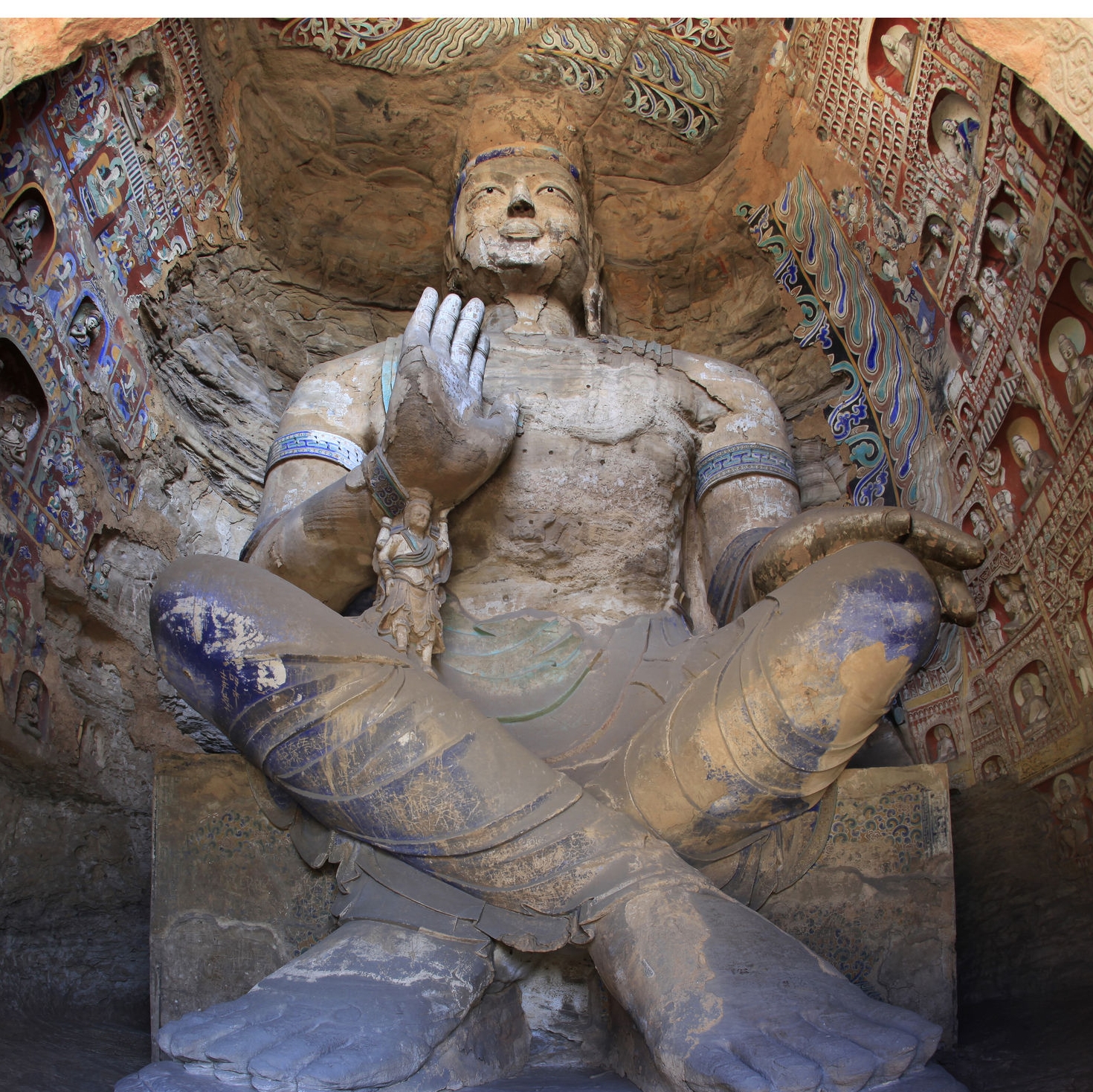
cave 13
471—494 A.D.
This cave has a domed ceiling. The main image, 13 meters high, is the cross-ankled Maitreya Bodhisattva, wearing a jeweled crown, necklace with bells and keyūra, and snake-shaped decorations on the chest. His right arm is supported from underneath by a Vajra which had been restored and repainted in later period, only the feet stepping on lotus flower of the original sculpture remain. On the east wall, the sculptures in niches, the architectural forms, the tassels and curtains carved all showed strong influence of Chinese style. The 7 standing Buddha in the large niche between the window and entrance on the south wall are vividly sculpted and gracefully shaped.

cave 12
471—494 A.D.
Cave No.12, also called “Cave of Music”. It is divided into front and back chambers. In the front chamber, the top of the outer wall is carved with mock timber eaves and the cave entrance are lined with carved columns; the top section of the north wall are 14 celestial musicians, whistling, beating drums, playing panpipe, lute, flute, harp, zither, Bili, harp, waist drum, conch and other musical instruments respectively. On the entrance lintel are a group of celestial dancers, whose dancing postures are exact representation of the dancing postures in human world. The celestial musicians with strong physique on the ceiling show the physical characteristics of the minorities of northern China. The musical instruments, their playing style as well as the types of band combination carved in this cave reveal the court orchestra and social music system in Northern Wei Dynasty that are precious materials to study the history of ancient Chinese music.
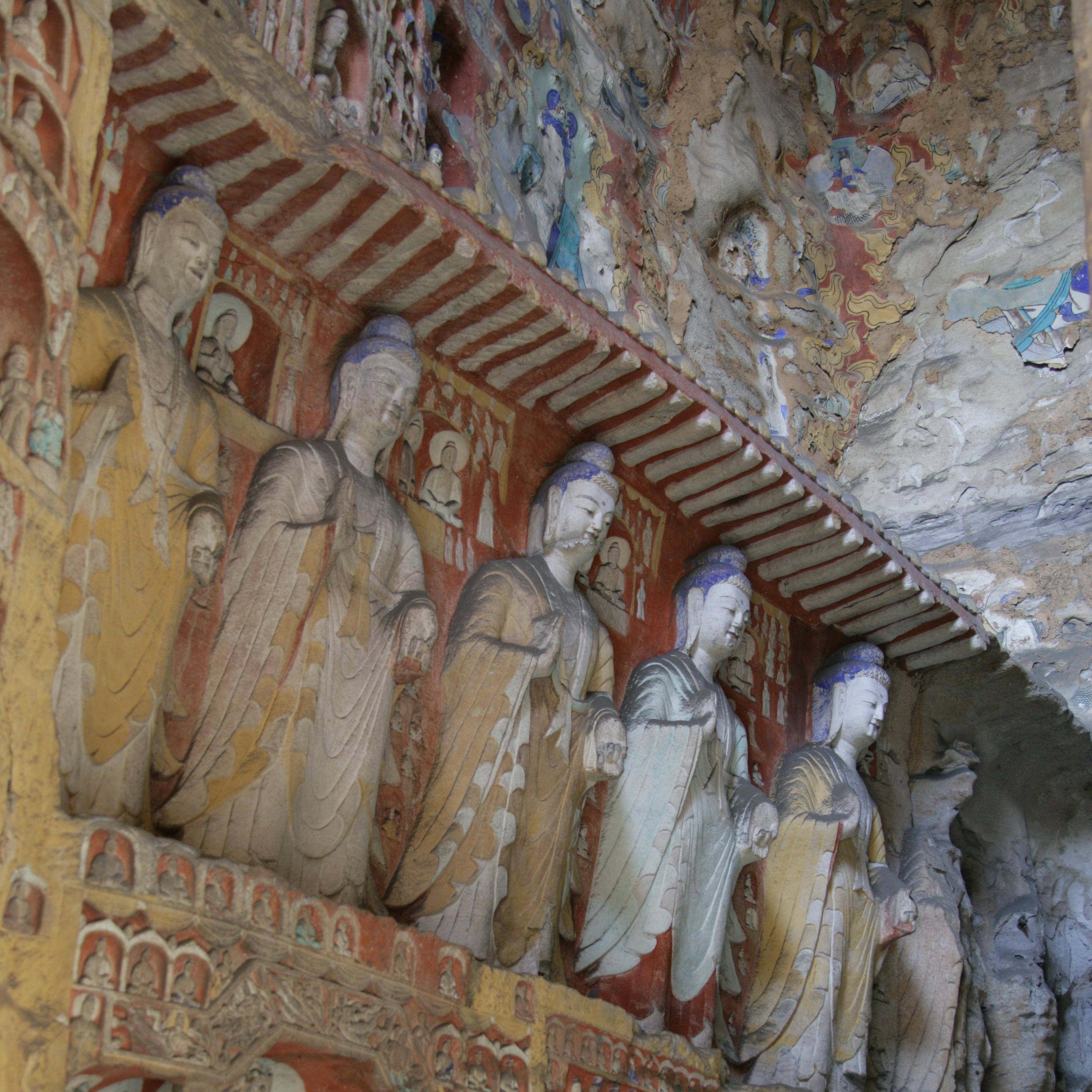
cave 11
471—494 A.D.
Cave No.11, 12 and 13 are a group. The central pagoda-styled column in Cave No.11 has 2 levels, with a simple style. The lower level has a standing Buddha on all sides, except the front elevation that also has 2 side Bodhisattvas with slender necks and thin waist, which are additions from Liao dynasty. There are 7 standing Buddha in the big house-shaped niche of the west wall, with wavy hairstyle, round face, tall stature and elegant clothing. There is an inscription of the statue in the 7th year of Taihe (483 AD) on the upper section of the east wall, the full text has a total of 337 words. It is the earliest and longest inscription at Yungang Grottoes. The calligraphy style is ancient and unassuming, and can be considered as a fine example of Wei Pingcheng stele calligraphy. The 4 wall niches in the cave are of diverse styles with no unified regulation, which is likely the result of privately funded excavations during the Northern Wei dynasty.
cave 10
471-494 A.D.
On the north wall of the front room, between the windows and the arched doorway, is Mount Xumi with 2 dragons intertwined in the middle section, and the mountain is filled with dense forests and roaming animals. Towards the edge, the mutli-headed Asura sits cross-legged on 1 leg, and the multi-arms supporting the sun and the moon in his hands. There are 3 house-shaped niches carved on each of the east and west walls, inside the niches are benevolent and peaceful looking Buddha and Bodhisattva statues. Under the Malabar plum tree, the Bodhisattva of Thoughtfulness sits half-stomped, holding his chin with 1 hand, contemplating the 4 Noble Truths. The Vajra warriors on the east and west sides of the cave entrance wear bird feather crowns, hold Vajra pestles and have a kind expression. The main image of the back chamber is Maitreya Bodhisattva with a Bodhisattva each at the east and west walls. The south wall is a karma story niche that shows Sakyamuni's teachings and conversion of the heretics.
cave 9
471-494 A.D.
Cave No.9-13 are commonly known as “Wuhua Caves”, and they are covered with brilliantly colored polychrome plaster applied by later generations. Since it was built in the era of national transformation and cultural renewal in the Northern Wei Dynasty, there is heavy Han style influence with distinctive Chinese characteristics.
The ninth and tenth caves are a group of double caves with front and back chamber and a Han-style palace layout. The cave entrance is lined with a row of columns, spanning 3 modules wide. The columns have magnificent carvings of thousands Buddha supported by lions and elephants. The entrance is constructed in the style of a mock traditional Chinese hip-roof building with symmetrical niches on both sides where the carvings are laid out in rows, and are richly decorative in a Chinese and Western hybrid style. Inside the cave, the 4 walls are filled with carved niches laid out in rows, the subject of the carvings are mostly from the Lotus Sutra. The cave ceiling is gridded and inside can be found lotus and Apsara. 8 strong Yaksha support the horizontal lintel with one arm. On the north wall of the back room, the main statue is Sakyamuni with a Bodhisattva each at the east and west walls.
cave 8
471-494 A.D.
On the west side of the cave gate, a peacock riding jiumolaotian is carved. He has five heads and six arms. He looks like a boy. He is smiling. He holds the sun and moon in his hand, or holds a bow and arrow. He holds a turtledove in his left hand. It has rich exotic customs. On the east side of the mountain, the head of Mount Luotian is three headed and eight armed. He has a round face. He wears a pointed hat on both sides of his head. His main arm is akimbo with one hand, and the other is holding a grain ear. The rest of his arms are supporting the sun and moon, bows and arrows, or carrying Ruyi. The shape of the multi armed gods originated from ancient India and was originally a Brahmanic God. This group of statues is unique to Yungang Grottoes, reflecting the characteristics of early Buddhism.
cave 7
471-494 A.D.
Cave No.7 and 8 are the earliest double caves in Yungang. The cave has front and rear chambers, and the main chamber has a rectangular plan. The sculptures in the cave are mixed with Hu and Han style. Eastern and Western cultures have the most splendid collision and blending here. On the 2 walls with windows are images of Buddhist monks meditating under trees. In the large niche on the upper section of the north wall is the crossed-legged Maitreya Bodhisattva, with Buddha sitting on both sides; the lower section is Sakyamuni and Prabhūta-ratna sitting side by side. Inside the rectangular curtained niche on the south wall, 6 beautiful puja deity figures with tall hair bun, known as the “6 beauties of Yungang”, face each other in a graceful half-kneeling posture, representing fine examples of western sculptures incorporating oriental elements. The cave ceiling mimics the flat caisson ceiling in wooden architecture, and 24 pairs of Apsara dance around lotuses in full bloom.
Cave 6
471-494 A.D.
This is a central pillar cave, also known as Caitya cave and pagoda temple cave. It is known as “the number one magnificent view of Yungang” due to its elaborate carvings and is considered a miracle in sculptural art history. The central square pagoda in the cave is 15 meters high and is divided into upper and lower levels. At the upper level, a standing Buddha and 2 bodhisattvas are carved on each of the 4 sides, and at each corner, a 9-story pavilion-style square pagoda supported by elephants; at the lower level, a niche with sitting Buddha are carved on each of the 4 sides. On the upper section of the 4 cave walls are 11 majestic looking Buddha. The cave ceiling is gridded and multi-armed multi-headed deities riding peacocks, lions, tigers, long-tailed birds and other animals can be found inside the grids. There are more than 30 extant images of the biographical stories that reflect the life of Sakyamuni, portraying a series of iconic and commemorative scenes from his birth, growth, marriage and to monkhood and teaching Dharma. These carved stories employed logical structure and unassuming techniques, and are valuable new creations of the Gandhara style art after spreading into the east.
Cave 5
471-494 A.D.
Cave No.5 and 6 are a group of double caves. The 4 multi-story wooden structures in front of the cave were built by the Governor of Xuanda, Tong Yangliang, in the 8th year of Shunzhi in the early Qing Dynasty (1651), and the impressive structures are built on the rock face. It is the “Yungang Moyun” among the “8 scenic spots of Yunzhong” in the Ming Dynasty. The upper section of the 2 walls of the cave entrance each carved a leafy sacred tree, and 2 serene looing Buddha sat sideways under the tree; in the lower section are majestic-looking Vajra warriors wearing feathered crowns with wings and armor. The sitting Buddha statue on the north wall is 17 meters high and is the tallest Buddha statue in Yungang Grottoes. It is covered with polychrome plaster of later time but in the style of the Tang Dynasty. The east and west walls each erects a standing Buddha, the west standing Buddha has a straight nose, curved eyebrows and a slight smile, evoking a graceful air. There is a worship path dug behind the back wall.
Cave 4
494-525
This is a pagoda temple cave with 1 door and 2 windows. The cave was not completed as planned. The central pagoda has statues on 4 sides, and are all set of 1 Buddha and 2 Bodhisattvas. The 4 walls in the cave are severely weathered. On the south wall, there is the inscription “Statue in memory of the deceased husband” during the Zhengguang period (520-525), which is the latest known inscription of the Northern Wei Dynasty statues at the Yungang Grottoes, and has now severely deteriorated.
Cave 3
471-494 A.D.
This is the largest cave in Yungang and was originally designed as a large pagoda cave, but was not completed in the Northern Wei Dynasty. A large wooden pavilion was originally built on the cliff on the exterior, but now there are only remains of a row of 12 beam-holder troughs in the upper area, indicating that the old Buddhist pavilion was a large structure spanning 11 modules wide. There are 2 3-story square pagodas at each end of the upper platform, 2 window openings are created between the pagodas, and a hip-roof-shaped room is formed between the openings with a crossed-leg Maitreya as the main statue. 2 doors can be found at both east and west sides of the cave, and the north wall of the cave is carved with 3 statues of Amitabha, Avalokitesvara and Mahāsthāmaprāpta, i.e. the “3Sages of the West”. The main statue of Amitabha is 10 meters high, sitting leaning back, his face is round and plump, and his demeanor is transcendent. The crown wearing Bodhisattvas on both sides are exquisite and solemn. The statues may date to either Northern Wei, Sui, Tang, and Liao Dynasties, and are mostly inferred based on the artistic style of the sculpture. Traces of cutting and removing the rocks in the cave are precious physical materials for understanding the ancient grotto excavation methods.
Cave 2
471-494 A.D.
On the exterior wall of the cave, above the window opening and on the west side, are inscribed “the mountains and rivers have clear sounds” and “the depths of clouds”. Inside the cave, a 3-story square pagoda sits in the center, the surface is carved with mock timber structure components such as tile tubes, eaves rafters, and dougong, and the upper 4 corners are carved with octagonal columns. The 4 walls of the cave are laid out in different levels and sections. The uppermost part is carved with niches of heavenly dancers and musicians, the lower part composed of zigzag-shaped drape belts, belts of meditation sitting Buddha statues, large niches, and long scroll-style relief stories. The main image on the north wall is a sitting Sakyamuni, which is severely weathered. The lower part of the east wall is embossed with the Buddhist story of “shooting the iron drum with arrow” by the prince. There is spring water gushing out of the cave, hence formerly named “Hanquan (Cold Spring) Cave”.
Cave 1
471-494 A.D.
Caves No.1 and 2 are a group of pagoda temple double caves, with the remains of a single-story square pagoda on each side of the cave exterior. On the east side of the window on the outer wall of the first cave is inscribed the Qing Dynasty Zhu Tinghan’s “Poem for Visiting Stone Buddha Temple”. The interior plan of the cave is rectangular with flat ceiling, and in the center, is a 2-story square pagoda with mock timber structure roof top and eaves. The top of the pagoda is decorated with coiled dragon and Xumi Mountain. The main image on the north wall is a cross-legged Maitreya Bodhisattva. The lower part of the east wall is embossed with the story of “Jataka of Shanzi”. According to textual research, Cave No.1 and 2 were built as Huguo Temples before the Liao Dynasty and were 1 of the 10 Yungang temples. It is known as “shigu hanquan (stone drum cold spring)” during the Ming and Qing dynasty and was 1 of the “8 scenic spots of Yunzhong”.
Scenic spot
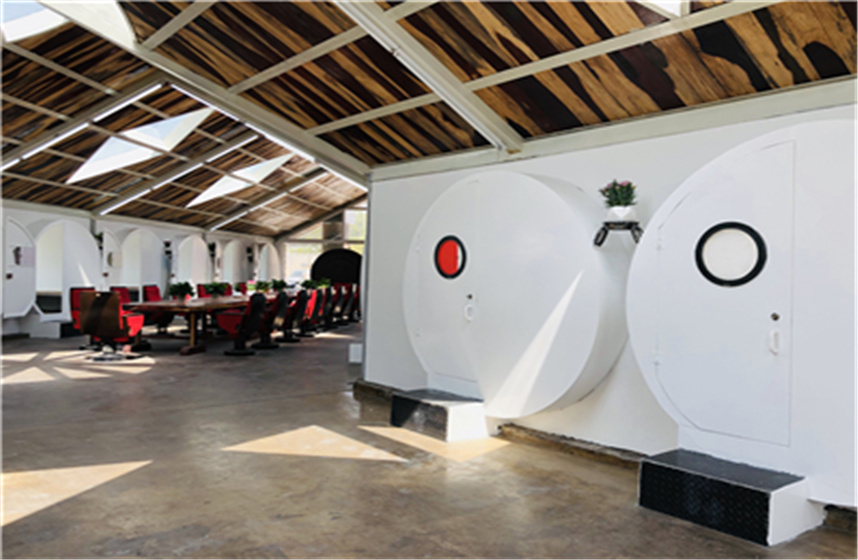
Snail apartment
Snail apartment is located in Dongshan of Yungang Grottoes scenic area. It is a part of Dongshan Bodhi art zone. It is a green and environmental protection sketching building made of waste cemen...
See more
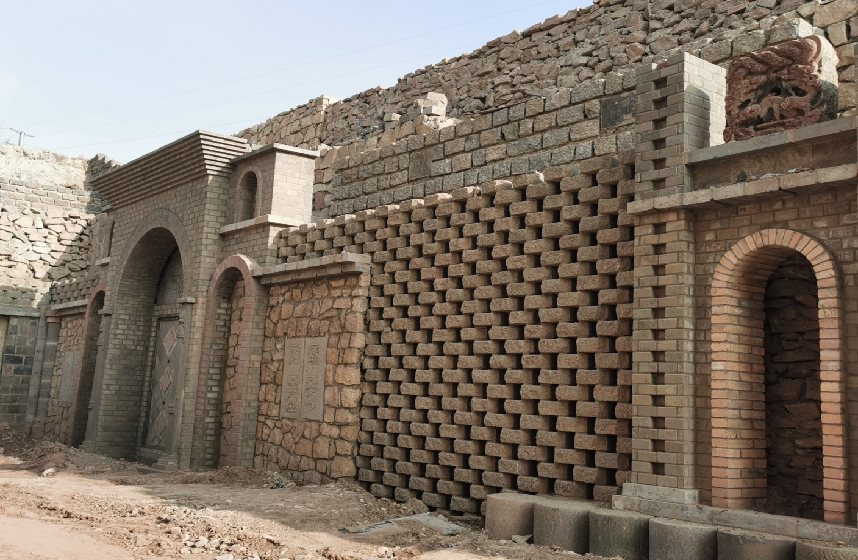
Turn waste into treasure
In 2008, Yungang Grottoes carried out the construction of a large scenic area, and comprehensively managed the surrounding environment of Yungang Grottoes. The government relocated one town and...
See more
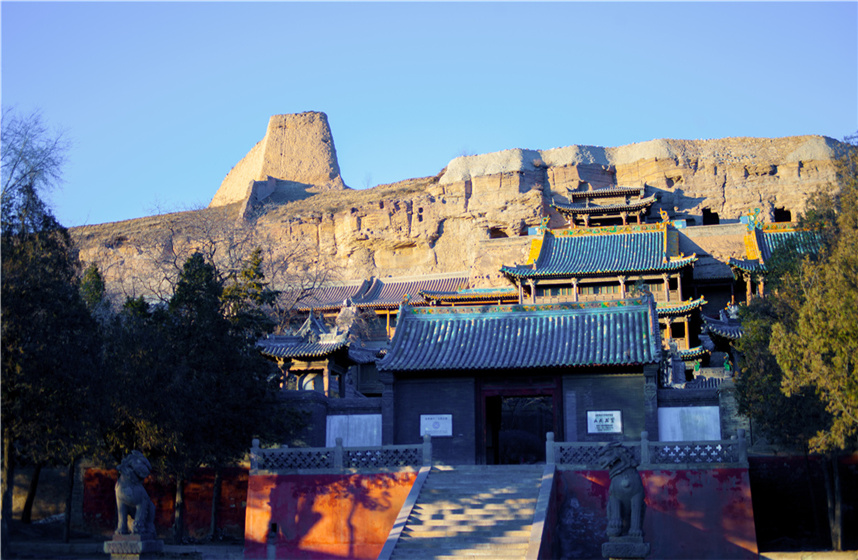
Ancient stone Buddha Temple
The ancient stone Buddha Temple is the Yungang temple in front of the existing caves 5 and 6. There are Mountain Gate, Tianwang hall, wing room, stone lion, bell and Drum Tower. Shanmen (Qing Dy...
See more
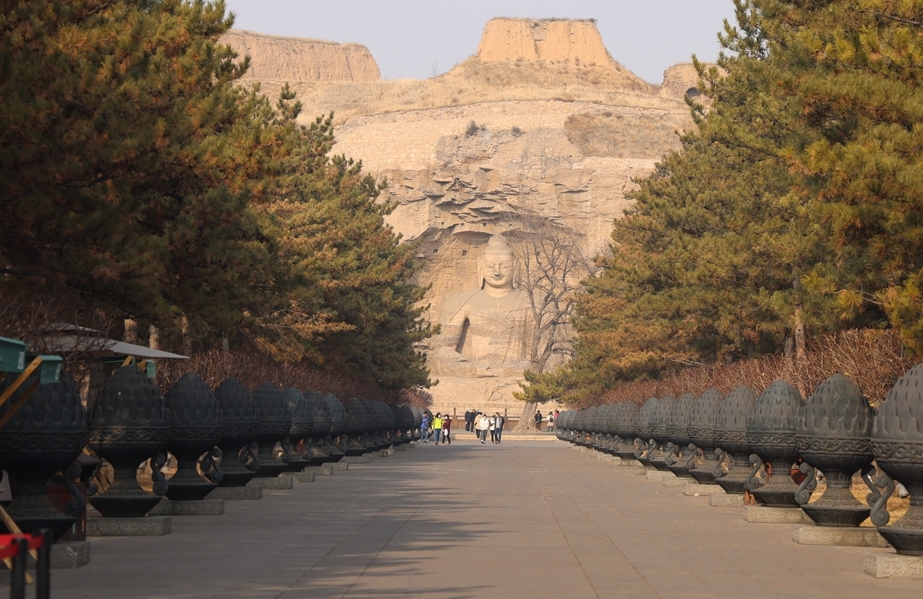
Lotus Avenue
Buddhism, ginkgo, pure water and lotus wash ancient and modern. Lotus Avenue is located in front of cave 20 of Yungang Grottoes. The straight and quiet Avenue connects with Jieyin Buddha Hall. O...
See more
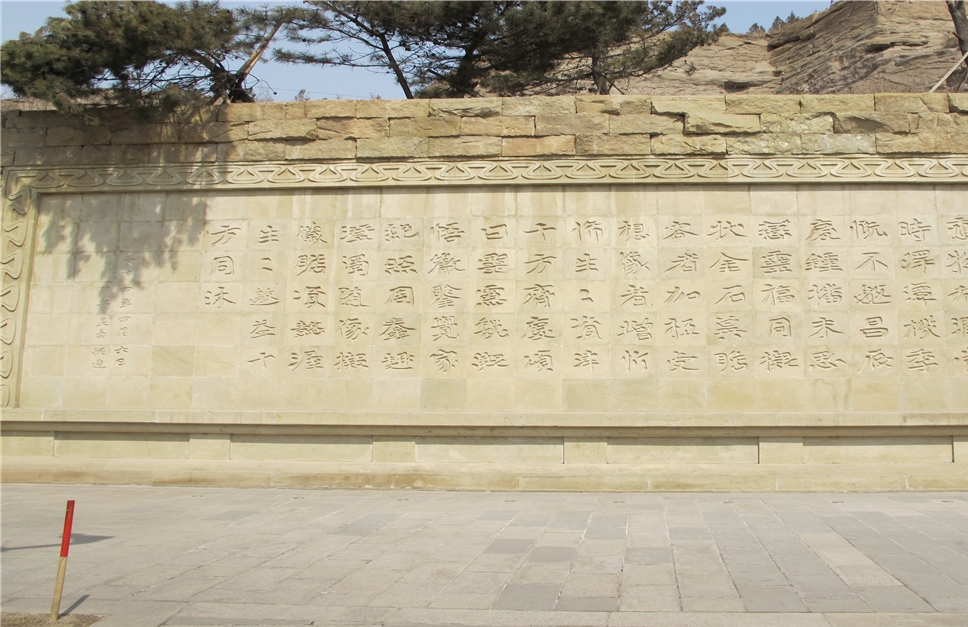
The statue of tanmei of bhiksuni
Located in front of the Mountain Gate of cave 1 of Yungang Grottoes, the stone inscription "the statue of tanmei of bhiksuni" was inscribed in 503 ad (the fourth year of Jingming Dynas...
See more
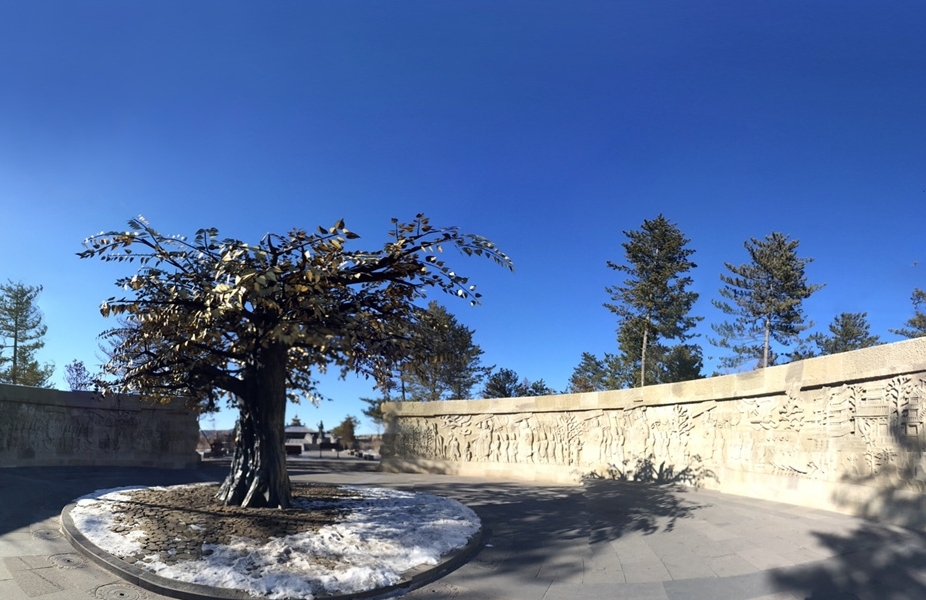
Relief wall for worshiping Buddha
Facing the west through the avenue of Buddha's light, there are two opposite fan-shaped relief walls in front of the world. This group of relief walls on the opposite side of the front are gener...
See more
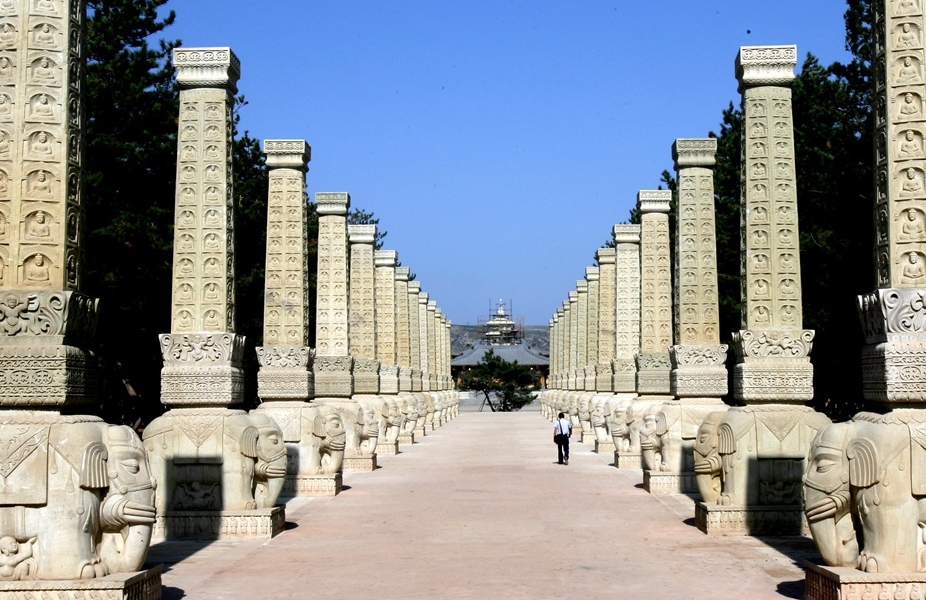
LIFO Avenue
The so-called "road of rites and Buddhas" is "booze, puwu, Zhou, Cihang, fa'an". Walking westward, thirteen pairs of thousand Buddha columns are listed on both sides of the L...
See more
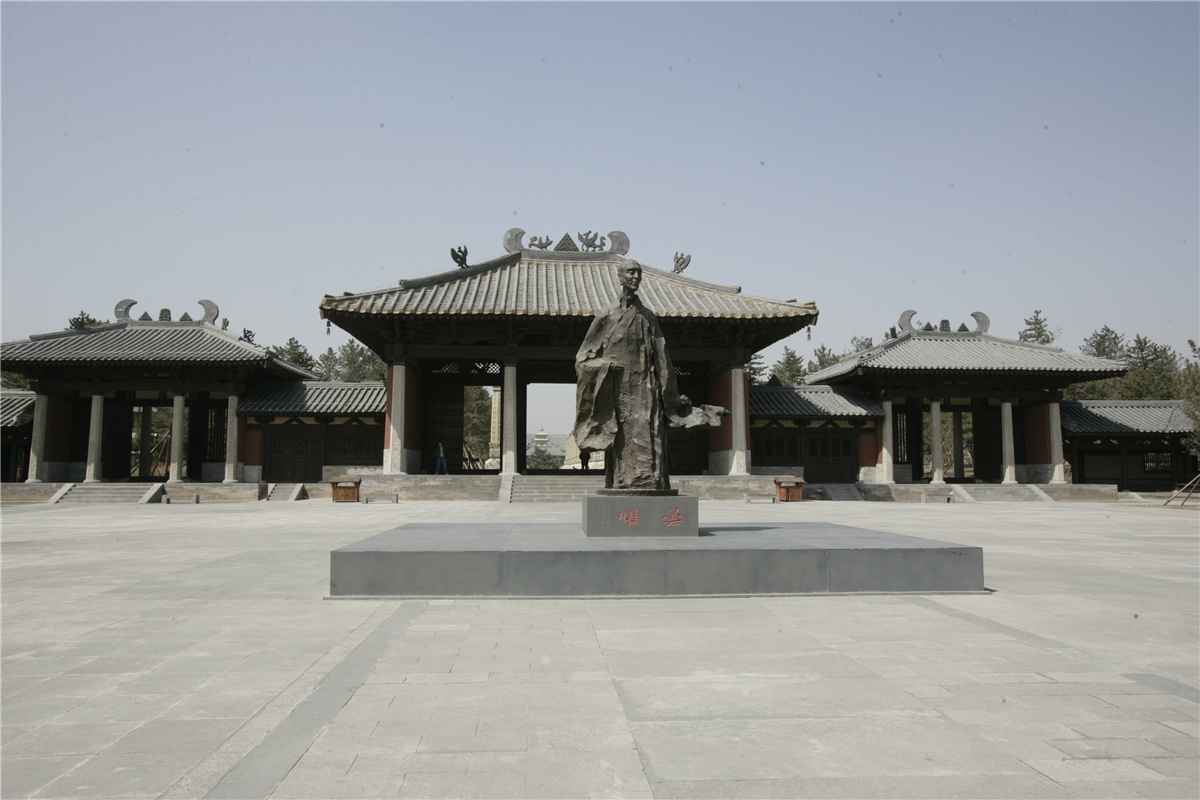
Tanyao square
Tanyao square is located at the entrance of Yungang Grottoes scenic area, covering an area of more than 6000 square meters.This 6,000㎡square was built to commemorate the pioneer of Yungang Grott...
See more
Travel around

Surrounding scenic spots
Stay at home and feel the charm of Yungang

Surrounding scenic spots
Wulongxia
Hongcibao
Hongshiya taixuanmen
Wulongxia
Hongcibao
Hongshiya taixuanmen
Jueshan Temple
Ciyun Temple
Water god Hall
Wutai Mountain
Yingxian Wood Tower
Mount Heng
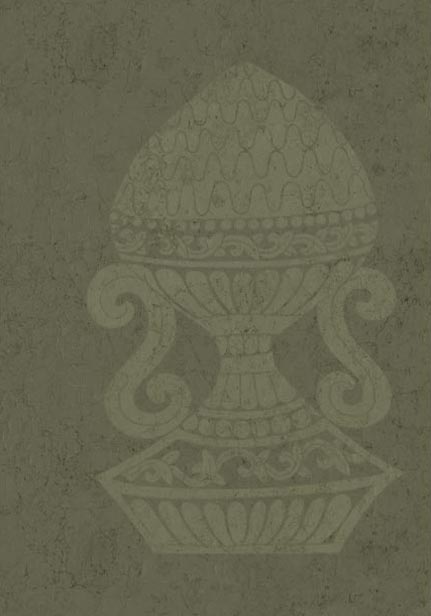
Leisure shopping
Stay at home and feel the charm of Yungang

Leisure shopping
Mount Heng
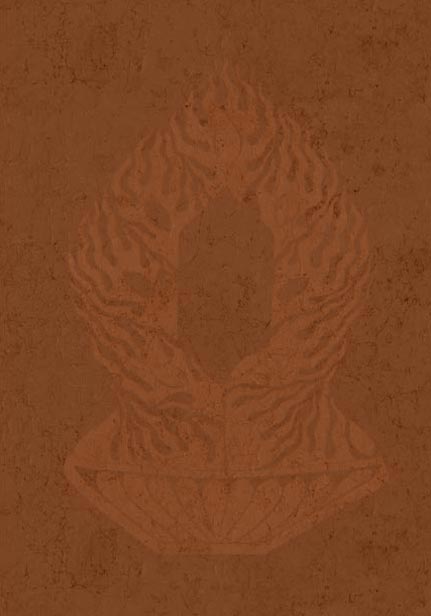
Catering and accommodation
Stay at home and feel the charm of Yungang

Catering and accommodation
Weidu International Hotel
Yonghe Food City
Yonghe Zhaozhai private Restaurant
Yonghe Yungang store
Yonghe Restaurant
Yonghe fast food Zhenhua Street
CELEBRITIES AND YUNGANG
In the more than 1500 years history of Yungang Grottoes, many literati have left their insights in Yungang. Nowadays, the stories of these celebrities and Yungang, as the witness of the multi-ethnic cultural integration in China, reflect our memor
See more


